Ear surgery is performed to correct certain types of Hearing loss,chronic ear infections,unhealed perforations of ear drum and congenital ear defects.
We have got best of technology to tackle any ear problems.
Top-of-the-line operating microscopes from Leica Switzerland and Carl Zeiss germany fitted with HD Camera which are extremely essential to handle the tiny delicate ear bones.
Ben-air Drill machine from Switzerland.
Skeeter from Meditronic,USA For precise Middle ear and inner ear surgery.
Stapedectomy is an operation in which the diseased stapes is removed and replaced with an artificial bone (a prosthesis) made of Teflon or titanium to restore the transmission of sound to the inner ear.
It is considered the standard of care in the surgical treatment of otosclerosis, a condition in which diseased bone forms around the stapes (stirrup) bone in the middle ear, causing it to become fixed to the oval window (opening to the inner ear). This blocks the transmission of sound to the inner ear and causes a conductive (mechanical) form of hearing loss. Untreated otosclerosis will get worse and eventually will usually begin to affect both ears.
Tympanoplasty is an operation to repair the ear drum when it is not working correctly or when there is a perforation (hole) in it, usually from infection, a ventilation tube, or sometimes from trauma. This may also include repair of the tiny bones in the middle ear, called ossicles (the hammer, anvil, and stirrup). It may be performed completely through the ear canal, with no external incision, or through an incision in the crease behind the ear. Which route is used will depend on the size and shape of the ear canal and location and size of the perforation. Sometimes mastoidectomy (removal of the bone and air cells behind the air which may harbor infection) is performed at the same time as tympanoplasty. Either way, the goal is to leave the patient with a "safe" ear, if possible (one that does not drain and is impervious to water) and to hopefully restore hearing as much as possible. Recovery takes a few days to a week in some cases and most patients can return to school or work within this time frame.
The mastoid refers to the bony air cells that are behind the ear canal. Their role is not completely understood, though they may help keep the middle ear space filled with air, and act as a resonance chamber to help us hear. In some, these air cells can develop an infection, mastoiditis, which does not respond to antibiotics, and surgery is necessary to address the infection. In other cases, a mastoidectomy is performed in order to place hearing devices such as a cochlear implant. The surgery that is performed to open and remove those air cells is called a mastoidectomy. During an operation, the surgeon uses a drill to remove the bone and underlying air cells to remove infection or disease, or provide access to the inner ear in order to place a cochlear implant. In some cases of infection or cholesteatoma (abnormal cyst of trapped skin cells), it is necessary to remove the posterior ear canal wall, which will combine the ear canal and mastoid into a mastoid "cavity". This is known as a "canal wall down mastoidectomy". The mastoid cavity helps reduce the likelihood of recurrent infection and cholesteatoma, and frequently the middle ear bones can be reconstructed to improve hearing as well. In some cases, the patient will require periodic visits to an otologist to clean debris from this cavity, which can be done during a clinic visit.
Some patients, both children and adults, have hearing loss in both ears that is too severe to be helped by hearing aids. Many of these patients can benefit from a cochlear implant. A cochlear implant consists of two parts, an internal component and an external component. The internal component is surgically implanted and has an electrode that is placed into the inner ear (cochlea) and a receiver that is placed into a pocket under the skin behind the ear. The external component is the processor, and it is worn on the back of the external ear. The external component picks up sound and converts it into signals that are then sent across the skin to the internal component, which sends them through a wire into the inner ear (cochlea). The hearing nerves are connected to the cochlea, and they pick up these signals and relay them to the brain, where they are perceived as sound. While a cochlear implant does not restore normal hearing, patients who have been implanted can, with time and practice, understand spoken word, follow conversation, and hear music.
During the operation for cochlear implantation, the surgeon makes an incision behind the ear, uses a drill to remove the mastoid bone, and enters the middle ear through an area called the facial recess. The electrode is placed through the facial recess into an opening created in the cochlea, and the receiver is then placed into a pocket under the skin on the skull behind the ear. Following surgery there is a waiting period while the incision heals and swelling goes down. After a few weeks, the patient is seen by an audiologist who activates the cochlear implant, at which time the patient will be able to hear with it. Some patients hear remarkably well, even on a telephone, as soon as their implant is activated. Others may need longer to get used to the new sound patterns they are hearing. Over the next few weeks to months following activation, the patient goes back to see the audiologist for additional programming sessions that will fine-tune the performance of the implant. Eventually, the patient learns to associate the sounds with words, which with time and practice will lead to natural sounding and functional speech recognition and word understanding.
Cochlear implantation is a true "miracle of modern medicine" and has profoundly changed the lives of hundreds of thousands of patients all over the world who are deaf and were formerly able to communicate only through lip reading or sign language. It is approved for use in children down to one year of age in the United States and has allowed children born deaf to develop completely normal speech and language so that they are able to enter a mainstream school environment. Its importance and significance in modern otology cannot be overstated.
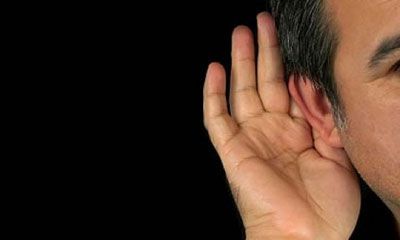
Hearing loss can be categorized into three main types: conductive, sensorineural, or mixed . In conductive hearing loss, sound waves are not able to reach the inner ear. In sensorineural hearing loss, the sound conduction mechanism can be normal, but the inner ear hearing organ or hearing nerve is not functioning properly.
Hearing loss due to problems with the external ear and middle ear bones is usually conductive. Hearing loss due to inner ear problems is sensorineural. outer and middle ear causes of conductive hearing loss can often be improved with surgery, inner ear hearing loss is usually irreversible and requires hearing aid.
At Dr Uppals ENT Hospital, all treatment options are offered for the different types of hearing loss, from hearing aids and surgically-implantable devices, to cochlear implants and surgery.

Dizziness is usually a symptom and not a diagnosis. It can be caused by any number of disorders and is generally classified into one of three different types:
The symptoms may range from mild to severe. The problem may originate from the inner ear or from another area of the body or nervous system. The possible causes for dizziness is long, and includes inner ear disorders, cerebrovascular disease (stroke), metabolic disorders, tumors, trauma, and medications. The correct diagnosis can only be determined by a consultation with a doctor. True vertigo often, though not always, originates in the inner ear. Inner ear conditions which may cause vertigo include positional vertigo, Meniere's disease, and viral inner ear infection.
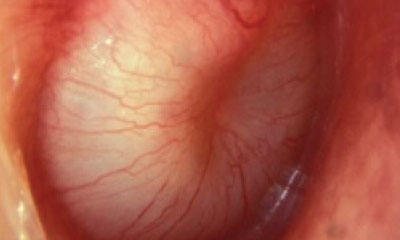
Ear infections are a common experience for children and adults, can involve either the middle ear, or the ear canal, and both can cause pain, fever, drainage, and changes in hearing.
Middle ear infection can occur in both children and adults. Most ear infections are caused by viral or bacterial infections, and sometimes do not need oral antibiotics to resolve. However, when an ear infection persists or does not respond to medical therapy, a minor procedure known as myringotomy with or without tube placement is done to remove the fluid, obtain a culture if appropriate, and provide a route for ear drops to enter the middle ear and directly treat the infection.
Sometimes even with appropriate care, an ear infection, or related condition such as a hole in the eardrum or cholesteatoma (skin in the middle ear) may need surgery to resolve. In these circumstances, an operation called tympanoplasty with mastoidecomy may be performed to treat the infection, hole in the ear drum, and/or cholesteatoma.
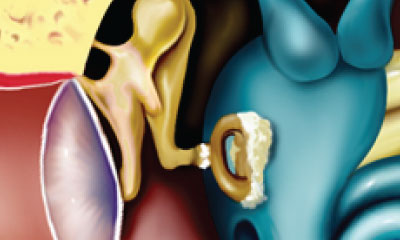
Otosclerosis is a common cause of hearing loss, primarily of the conductive type. It is caused by fixation of stapes bone in the middle ear. The middle ear consists of the eardrum and three tiny bones.
Abnormal bone growth around the stapes may interfere with the its ability to vibrate and transmit the sound waves, and hearing loss is the result. Otosclerosis may in some case also cause hearing loss of the sensorineural type (nerve deafness).
There are two treatments for otosclerosis, a hearing aid or an operation called stapedectomy. The operation involves removing the disease stapes bone and replacing it with an artificial one called a prosthesis.
At Dr Uppals ENT Hospital, all treatment options are offered for otosclerosis, from surgical correction to simply observe and monitor your hearing loss; treat your otosclerosis medically; or wear a hearing aid. The surgical procedure performed to correct otosclerosis is called a stapedectomy, which is an elective and outpatient procedure.
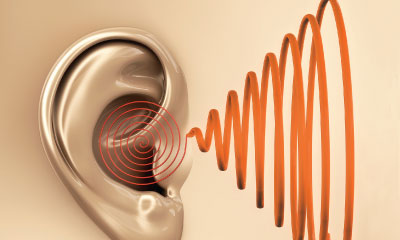
Tinnitus is the perception of noise in the ear or head, which is generated inside the body rather than coming from outside. The problem is often more noticeable at bedtime or in quiet places, and fatigue may make it worse. It becomes more common as we age. Left untreated, tinnitus can lead to irritability, poor concentration, difficulty sleeping and even depression. While there is no cure, fortunately treatments are available. The first step is to have an evaluation to determine the cause, as this will determine what treatments are most suitable.
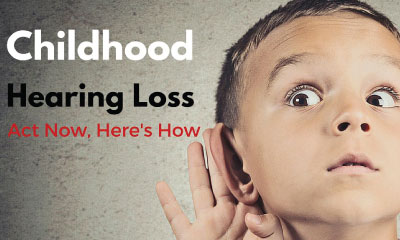
Children, like adults, can have hearing loss caused by problems in any part of the ear. Even a small amount of hearing loss in children requires attention and intervention. Problems in the external ear canal can include ear wax, foreign objects, "swimmer's ear" and eardrum perforation. In rare cases, a child's ear canal never fully develops before birth; a condition that is called atresia.
Problems in the middle ear can include otitis media (middle ear fluid) or abnormalities with the bones. It can usually be treated medically or with insertion of ventilation tubes into the eardrums (middle ear fluid).
Problems in the inner ear can be present at birth or acquired as a result of illness or injury to the very delicate inner ear structures. Sensorineural hearing loss cannot be corrected with medicine or surgery, although there are several surgically-implantable devices that can help some children who cannot benefit from conventional hearing aids.
At DR Uppals ENT Hospital, we offer hearing evaluations performed by specially trained hearing care professionals and hearing aid consultations for selection of the proper hearing aid, fitting, follow-up measurements, and counseling. If hearing aid is not helping cochlear implant is performed.
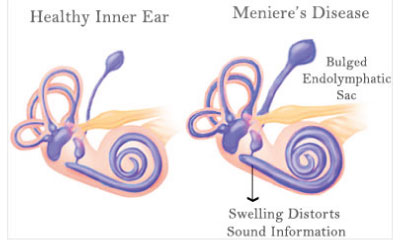
Meniere's disease is a disorder of the inner ear .Common symptoms include episodes of vertigo (spinning) typically lasting for hours, fullness or pressure in the ears, roaring or ringing in the ears, and hearing loss, particularly in the low frequencies, which may be fluctuating. The attacks may be mild or severe, and the you may feel perfectly normal between them. You may have nausea and vomiting.
while Meniere's disease is not curable, it is usually treatable. A low salt diet is recommended, and diuretics (water pills) in controlling mild symptoms. Injecting medication into the middle ear, like steroids, streptomycin, or lidocaine, depending on the patient's symptoms. The patient often has no more dizzy spells, although may continue to be unsteady, and the hearing may be improved and the fullness and noise in the ear may be less.
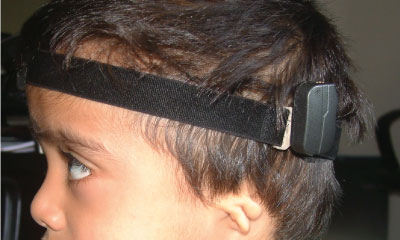
2 yrs. old boy was born without external pinna and canal. This was indeed a challenging case as Hearing Aid could not be given as there was no canal, and cochlear implant could not be done as cochlea was normal. he was fitted with bone anchored hearing aid, and he is doing great. Children less than 6 years have thin skull bone hence BAHA is fitted with headband, surgery is performed when skull bone become adequately thick
BAHA is an implantable hearing device used to treat hearing loss. The device works by directly stimulating the inner ear through the bone. BAHA is used to improve hearing in patients with chronic ear infections, congenital external auditory canal atresia or one-sided deafness who cannot benefit from regular hearing aids.
The BAHA is used to for people with conductive and mixed loss hearing loss with chronic infections of the ear canal or the middle ear, people with a very narrow ear canal or an absent ear canal and who are deaf in one ear.
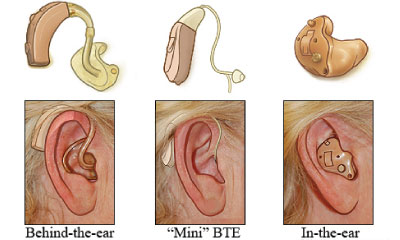
Hearing Aid Center at Dr Uppals ENT Hospital offers the latest in hearing technology with unsurpassed customer service and care to our patients. Our team is committed to providing you and your loved ones with clear and up-to-date solutions.
A hearing aid is composed of a microphone, an amplifier, a speaker, and a power supply, which have been miniaturized into a device that can be worn on or in the ear.
The hearing aid evaluation usually takes about an hour.Proper hearing test is done in audiology department. In addition to evaluating your hearing, our audiologist help you understand hearing devices and what you might need for the best hearing results. Conventional hearing aids include: Behind-The-Ear (BTE), In-The-Ear (ITE), Completely-In-the-Canal (CIC), and CROS Hearing Aids (contralateral routing of offside signal).
At Dr Uppals ENT Hospital, we offer all technologies of hearing aids to help you achieve the best hearing results possible.se.
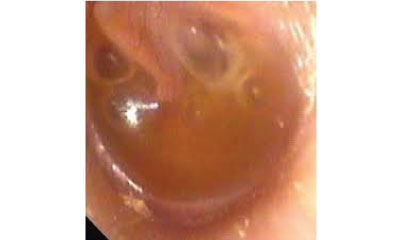
Serous otitis media, is the most common condition causing hearing loss in children. Normally, the space behind the eardrum which contains the bones of hearing is filled with air. This allows the normal transmission of sound. This space can become filled with fluid during colds or upper respiratory infections. Once the cold clears, the fluid will generally drain out of the ear through a tube that connects the middle ear to the nose: the Eustachian tube.
Because children need hearing to learn speech, hearing loss from fluid in the middle ear can result in speech delay.
If a child has fluid for many months during the formative years, there may be noticeable mispronunciation which will require speech therapy.
If medical treatment does not show improvement, surgical drainage is indicated.
